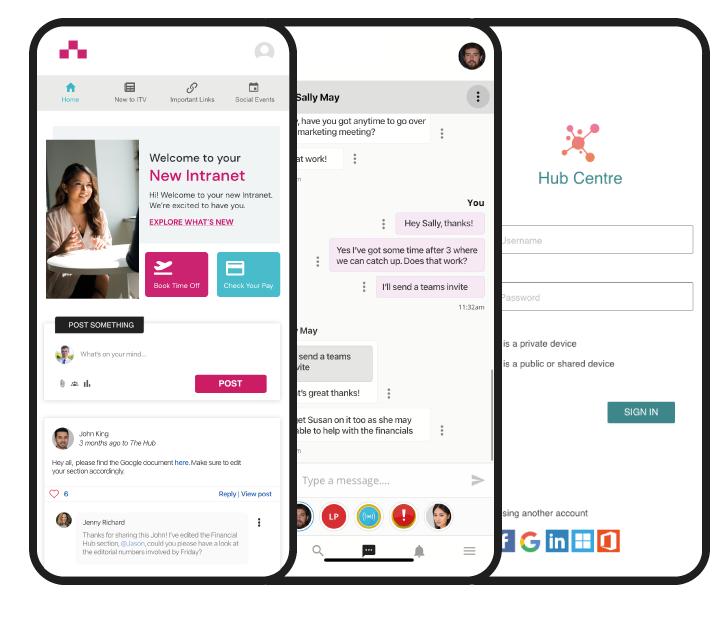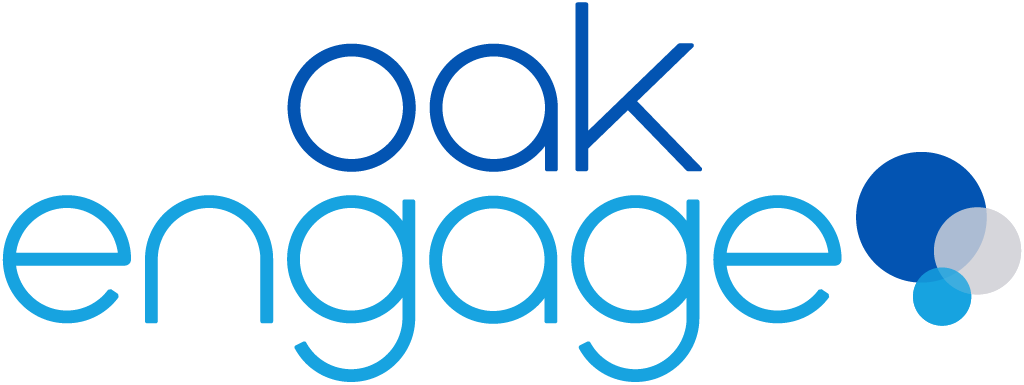Most organisations now recognise the value and importance of effective internal communications and the role it plays in driving employee engagement and ensuring a good employee experience.
But it’s important to have a clear overall strategy to ensure you’re prioritising the right things and to help you engage key stakeholders such as your senior leadership team.
Maybe you’re new to internal communications or you’ve been given responsibility for it without previous experience. In this guide, Jos Harrison, Internal Comms Specialist, gives you some practical steps for developing your internal communications strategy, under some key headings.
- What are you here for?
- Communication Objectives
- Key Messages
- Communication Principles/Best Practice
- Your Channels
- Measurement
- Activity Plan/Calendar
What Are You Here For?
To start with, what’s the overall aim of your internal communications? A common phrase describing the aim is to inform, engage, connect and inspire your people. And that means:
- Ensuring effective communications are a key enabler for the organisation delivering its priorities
- Improving employee engagement and alignment with strategy
- Ensuring a great employee experience when it comes to communications
Communication Objectives
What do you want your people to know, feel and do as a result of your internal communications? Setting this out in your strategy will help drive your activity plan
For example:
Know: our strategy and the role they can play in delivering it
Feel: inspired and ready to contribute
Do: align their team objectives behind the strategy
You can also do this for each key audience group e.g. managers / customer-facing colleagues.
Key Messages
What’s the overall story for your organisation? How do you want to inspire people and get them behind you?
Your story might have a number of topics/elements:
YOUR MARKET/EXTERNAL ENVIRONMENT – what’s happening in the market / external environment your organisation is operating in. This is often a key driver of strategy and priorities
VISION/PURPOSE – what is your organisation here for?
STRATEGY AND PRIORITIES – where is the organisation headed and what are the key things it’s looking to achieve over the coming period
BRAND – your organisation’s brand proposition to customers / external stakeholders
VALUES – often described as ‘the way we do things round here’, corporate values shine the light on how everyone should work
CHANGE – many organisations now have change or even transformation programmes to deliver major change that will enable the organisation to achieve its strategy. It’s important that your internal communications strategy is an enabler for delivery of this change.
KEY CHALLENGES – what are the big challenges your organisation faces?
FINANCIALS – it’s important, particularly in commercial businesses, for your people to understand financial targets and key financial drivers so that they can contribute to your financial performance
WORKING HERE – what the organisation expects from you and what you can expect from the organisation
You’ll also need to tailor some messages by audience.
Communication Principles / Best Practice
How are you going to communicate? It’s important to set out the principles that you’re going to follow with your communications.
Here are some things to consider – select the ones that are appropriate for your organisation:
Addressing the Employee Agenda
In our internal communications audits, we often hear ‘talk to us about the stuff that’s important to us’. Effective internal communications should reflect your employees’ needs and interests, as well as the organisation’s agenda – talking about the things that matter to them like planned changes to structure, outlook for jobs, rewards and recognition, wellbeing, and of course Diversity and Inclusion.
Delivering a Consistent Rhythm and Drumbeat
We are passionate advocates of a rhythm and drumbeat when it comes to communications - consistent, regular communications keep people informed, engaged and connected. That means having a comprehensive set of channels, segmented by audience as needed (See Your Channels section below).
Connecting People with Leadership (And Vice Versa)
The biggest theme captured in employee feedback from our internal communications audits is ‘we want to connect with the leadership team on a regular basis. And it’s important for leaders to hear from the front-line too. So your strategy needs to give people the opportunity to do this – through channels such as Q&A sessions, online through your intranet, or platforms like Microsoft Teams. Supporting your leaders to play their part is essential.
Supporting Hybrid/ Flexible Working
The Covid-19 pandemic has changed the way we work for good. Organisations who have historically resisted remote/flexible working are now embracing it. With your workforce now more dispersed than ever before, the way you communicate needs to both reflect and support that.
Giving Employees a Voice
The days of internal comms just being about broadcasting the management view are long gone. An effective internal communications strategy gives people a voice through the channels to share their feedback, ideas and experience, encouraging collaboration and enabling conversations through innovative face-to-face formats, social intranets and other digital platforms. Employees increasingly expect the same interactive digital experience at work that they take for granted in their personal life.

Involving People on Change
Our research shows that communicating change effectively is really important to people, especially when there is an impact on people and jobs. But this is something many organisations get wrong. Involving your people in the change journey from the start should be factored into your strategy.
Training and Supporting Leaders to Engage With Their Teams
From your leadership team to front-line team leaders, your managers at all levels are an important communication channel. For many people, their line manager is a key, trusted source of information and a feedback route to leadership. Leaders need support and training to enable them to fulfil this communication accountability. For example, senior managers often need support using digital platforms to engage with people. For the rest of your managers, engaging them in their communication accountabilities and providing them with supporting tools and training will be a key part of your strategy (See also Managers Channels).
Using a Consistent Tone of Voice
Authentic and informal is the mantra these days when it comes to internal communication tone of voice. For the Millennials and Gen Z forming an ever-increasing part of the workforce, management/business speak is a major turn-off. And with people consuming information in their personal lives in bite-sized chunks from news apps, social media, etc. being concise and succinct is also important – more than ever, less is more. It’s important to be clear on your tone of voice, as this will encourage people to contribute to your channels and also guide them to your leaders.
Being Creative
Your people have lots of competing demands for their attention on a daily basis. Long, boring emails aren’t going to cut it. Being creative with your internal communications will help drive engagement, for example using video to grab peoples’ attention and telling the business’s story in a creative way.
Your Channels
A typical set of channels would include:
Regular 'Town Halls'
Regularly update your people on organisational performance, people and current issues, with an opportunity for feedback and questions. For office-based businesses, these have mainly been virtual during the Covid-19 pandemic but now need to be optimised for ‘hybrid’ working with some participants in the office and some joining remotely. Allow major functions of the business to take turns to present and record and share the video, so the entire team is encouraged to share their opinion and get feedback on any comments given. If management isn’t communicating with their workforce about key objectives and how well they’re performing, it can often lead to confusion.
Q&As/Listening Sessions
You may have a lot to tell your people, but how often do you provide opportunities for them to ask questions, share their experiences and challenge the management view?
Five minutes at the end of a strategy update l isn’t enough. Dedicated sessions where your people drive the agenda are critical to ensure a constant stream of two-way communication. Sessions like these work best with smaller groups. Start by rotating members of your leadership team to host them and give them wider impact by reporting on what was discussed in your newsletter or intranet news story.
Intranet
A company intranet with regular news, people stories and all the resources your people need in terms of policies, procedures, templates and HR information. With added social functionality, employees can connect, collaborate and share what they’re working on. Modern, social intranet platforms like Oak Engage have come into their own in the last couple of years and particularly through the pandemic when workforces have often been dispersed. These platforms have kept people connected and will continue to do so in a world of hybrid working. They are now an essential part of an internal communications infrastructure.

Push Newsletter
While news stories can be ‘pulled’ as and when people access their intranet, people also want the important updates delivered to their inbox. This can be via an e-newsletter, usually weekly or monthly. Feedback from our internal communications audits is often complaints of information overload from multiple sources – so it’s important to have a channel that delivers the important to know stuff in an easy to consume format. You could sum it up as ‘read this – and you’re up to date'.
Managers Channels
In these challenging times, it’s important that all your managers are ‘singing from the same hymn sheet’ and equipped to respond to queries and concerns from their teams. A regular conference call focused on current key issues can help ensure that this happens. It’s also often linked to / combined with a managers’ support channel, providing them with a few topics every month to engage their teams on and items for action / their information as managers.
Strategic Priorities
What are the strategic priorities for your internal communications strategy? This will depend on the current status of your internal communications and what you need to do to move them forward. It could be around introducing new channels, or it might be to support a specific business initiative e.g. a move to hybrid working. Make sure these are clear so that key stakeholders know and buy into what you’re focusing on for the period of the strategy.
Measurement
What do you want people to be saying if communications are effective? How are you going to measure employee engagement with communications? What are your key metrics?
It’s important to measure the success of your internal communications strategy and demonstrate the value of internal communications to the organisation. There are a number of ways you can do this, including:
- Intranet usage – most platforms provide user activity metrics including the number of posts, likes and comments, video views, etc.
- Email newsletter open rates
- Communication and engagement questions in your organisation’s regular employee surveys
- A specific annual internal communications survey
- Feedback workshops to provide you with qualitative feedback and hopefully some great quotes on the effectiveness of your communications
- Event surveys
- Campaign data e.g. the number of people signing up for a new employee benefit you’ve promoted.
Activity Plan / Calendar
This part is simple – what are you delivering, when and through what channel? This will help you ensure effective planning and you know exactly what is going out and when.
AND FINALLY…..
Once you have all these elements confirmed you will have a comprehensive internal communications strategy that you can use to guide your team’s delivery and to engage key stakeholders so they buy into and support your strategy.
Need Support?
Like the ideas in this Guide but not sure where to start? If you would like support to develop your internal communications strategy or assess the effectiveness of your current strategy, get in touch – we have experts on our team who can help.
All research and practical tips were conducted and written by Jos Harrison, Internal Communication Specialist.


![Developing an Internal Communications Strategy for your Organisation [Your Practical Guide]](/media/jyyhwgcp/internal-comms-strategy.jpg?width=50)
